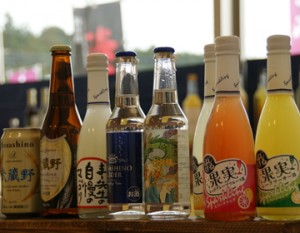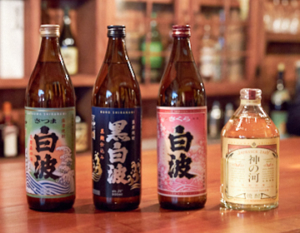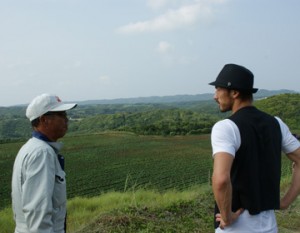Sanwa Shuyu produces many products, including its flagship barley shochu “Iichiko”, sake “Waka Botan”, and “Ajimu Wine”. Sanwa Shuzo aims to create higher quality products while paying close attention to raw materials and production methods. What are the new challenges they are tackling at the place where they started and where they are aiming to go as a company?
Sanwa Sake Brewery’s origins in sake

Iichiko” is so famous that it is no exaggeration to say that it represents barley shochu in Japan. Everyone has probably seen or heard of it at least once. The headquarters of Sanwa Shuyu, which manufactures the shochu, is located in Usa City in the northern part of Oita Prefecture. With a population of approximately 50,000, it is not a large town in Oita Prefecture, but it is surrounded by lush green mountains and has the largest area of rice and wheat paddies in the prefecture, which are actively farmed.
The town is surrounded by lush green mountains and has the largest area of rice and wheat paddies in the prefecture, making it a thriving agricultural area. However, it is probably not widely known that Sanwa Shuzo also produces sake and wine.
Sanwa Shuzui’s first product was not shochu, but sake, and the company’s second product after sake was wine. After sake, Sanwa Shuzui then began producing wine. Even today, the company is said to refer to Waka Botan as the father, Ajimuin Wine as the mother, and Iichiko as the son.
As a means for Usa Hirano breweries to compete with major brands.
The company was started in 1958. The history of the company dates back to 1958, when three breweries in the Usa Plain, where there were many sake breweries, Akamatsu Honke Brewery, Kumano Midou Brewery, and Wada Brewery, each of which brewed sake, collaborated to improve their business situation, which had deteriorated due to the spread of major brands such as Nada and Fushimi. The three companies joined forces to improve their business situation, which had deteriorated due to the spread of major sake brands such as Nada and Fushimi. The following year, Nishi Shuzojo was added, but the management strategy was to focus on brands that were well known in the local market, rather than developing multiple brands in the dark.
However, it was difficult for the four companies to produce sake with the same taste, aroma, and quality. Therefore, at that time, each of the four breweries blended their own sake and bottled it to be sold under the Waka Botan label. However, it was still difficult to make a living only by brewing sake, so in addition to growing mandarin oranges, which were also thriving in Usa City at the time, in 1966, a national pilot project to develop farmland led to the growth of grape growing in Ajimuin Town, adjacent to Usa City, and the company decided to use its idle breweries and create year-round jobs. In 1971, the company obtained a license to produce fruit wine with a view to utilizing its idle warehouses and creating year-round jobs. The company also began producing wine. Of course, none of his businesses was an immediate success, but he never gave up and continued to take on new challenges.
Background of the birth of “Iichiko,” the company’s most important product
Thus, about 20 years after its founding, the company added wine brewing to its sake business, and the barley shochu “Iichiko” was born. As a sake brewer, the company had already been producing rice shochu and sake lees shochu, but had not yet begun work on barley shochu. However, Nikaido Shuzo, also located in Oita Prefecture, created an authentic 100% barley shochu, which became a big hit, and all the companies in the prefecture began to pay attention to shochu made with barley. Of course, the company followed this trend and began to develop its own barley shochu.
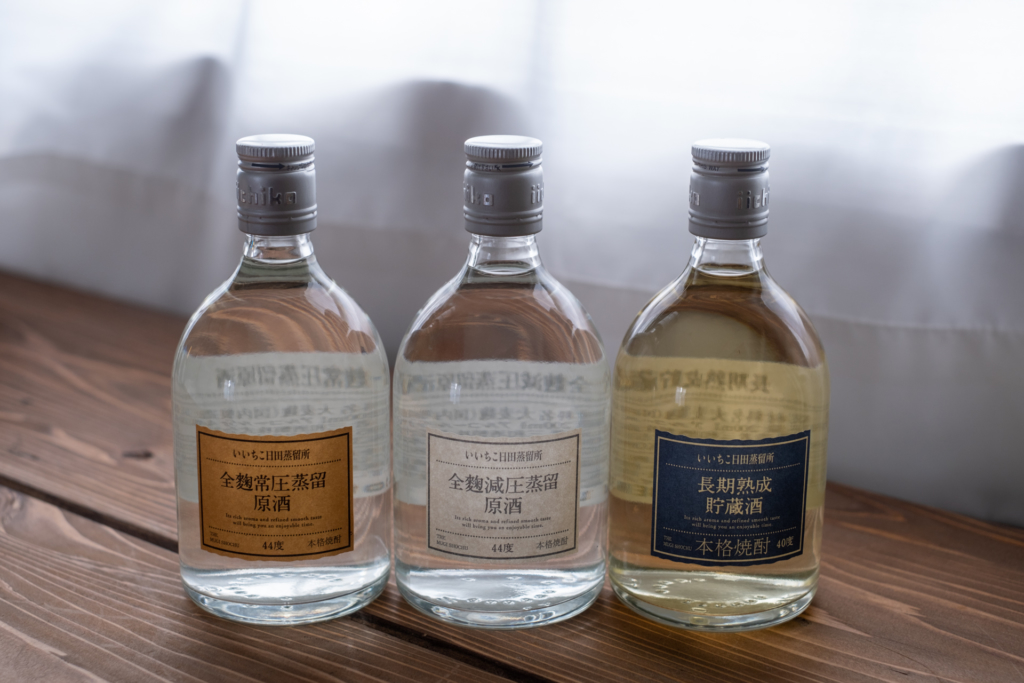
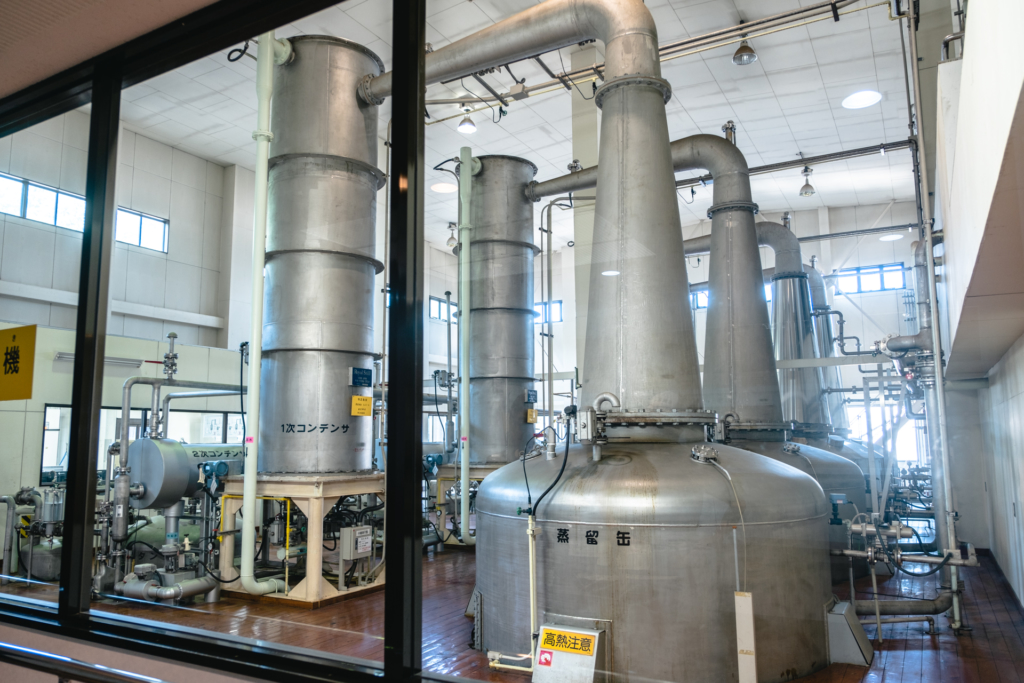
Incidentally, since Oita Prefecture is characterized by a two-crop Seto Inland Sea climate, barley has long been cultivated in Usa City as well. The city also has a food culture that uses barley miso, and has a unique technique for making koji with barley instead of rice, so barley is a familiar ingredient. However, compared to sake brewing, shochu production has not been a major focus, so it was necessary to update the production technology.
Sanwa Shuzui therefore hired Masahiko Shimoda, who had extensive knowledge as a sake brewing engineer, as the production manager in order to build a technological foundation, including research. Under Mr. Shimoda’s direction, the company began full-scale shochu production utilizing koji making and fermentation techniques. Shimoda’s shochu was well received because of his focus on koji and his pursuit of a clean, easy-to-drink taste, but it was not easy to produce it in a stable and reproducible manner, so he spent many years conducting research on stabilizing and equalizing the taste.
Aiming for distilled spirits unique to Japan, with a focus on koji
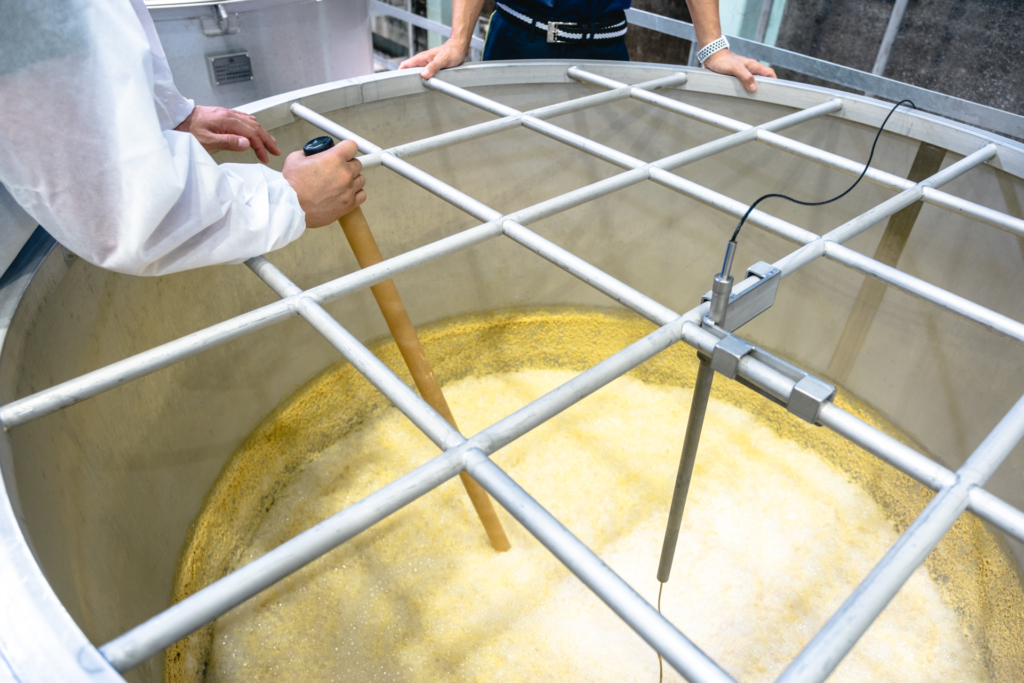
The company believes that it is important to determine the suitability of koji for the distillation method of shochu. The company takes pride in the fact that it has been making sake since before it was founded, and it is very particular about the use of koji. For example, there are two types of distillation methods: reduced-pressure distillation, in which distillation is carried out at low pressure to retain a high level of flavor and aroma, and normal-pressure distillation, in which the flavors of the ingredients are brought out through a traditional method. Mr. Shimoda has blended the two to bring out the best flavor. He has mastered barley koji in order to maximize the fermentation technique using koji for both reduced-pressure and normal-pressure distillation, and has refined his techniques with the belief that he must “be even one millimeter better than the competition.
The culmination of their efforts was “Iichiko,” which was born in 1978. The shochu boom at the time of its release helped, and Shimoda’s insistence on a clean, refreshing taste was widely supported by the public, making it an instant hit. Mr. Shimoda, who contributed greatly to the development of the product, is currently the chairman of the company.
Having continued to refine the quality of its products, the company’s next goal was to create branding for consumers. To this end, the company asked art director Hideya Kawakita, also from Fukuoka, Kyushu, to do everything related to PR, from bottle design and sales promotion posters to catch copy and commercials. This worked well, and Iichiko’s visuals and copy remained in the minds and memories of those who saw them.
The “Flask Bottle” and “Special,” both of which he designed, won the Good Design Award. The combination of the quality-oriented contents and sophisticated design made Iichiko’s popularity unshakable.
Karashima Kyokunokura” from Usa City, the nation’s first “special sake zone”.
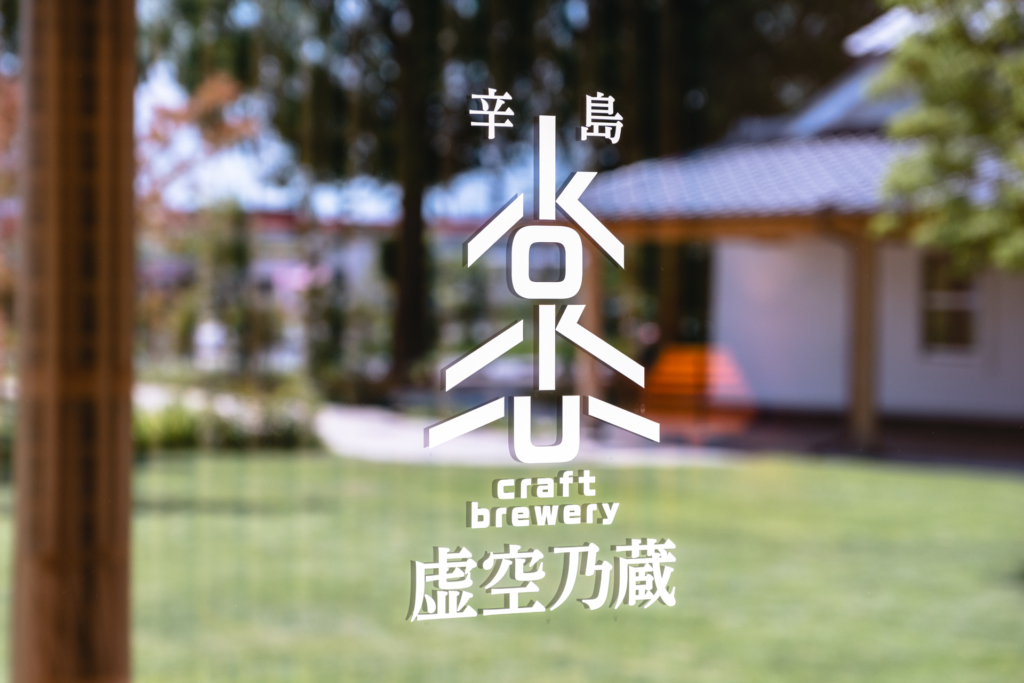
The new base of operations for Sanwa Sake Brewery is “Karashima Kuukunokura”.
Since Usa City was the first city in Japan to be designated as a “Sake Special Zone,” the company opened this facility in 2022 with the desire to “convey the culture of koji and fermentation from Usa to the world,” which it has cherished since its establishment. The facility is a place where visitors can experience the fun of sake brewing, koji and fermentation culture, and enjoy hands-on programs such as brewery tours and sake tasting. Sanwa Shuzo is not just about ‘Iichiko. We want many people to enjoy this place where they can have various conversations with the brewers. I want people to feel that Sanwa Sake Brewery is interesting.” Mr. Shimoda says that he has put everything he wants to do into the Karashima Kukunokura.
The location is the site of the former head office, not far from the head office. The land is filled with the thoughts and feelings of the founder and all those who have been involved with Sanwa Shuzo. It is an expression of the company’s challenge to build a new history on the foundation of the traditions and thoughts of the brewers and producers that have been preserved since the company’s establishment in 1958.
Returning to the starting point and proposing new values for sake
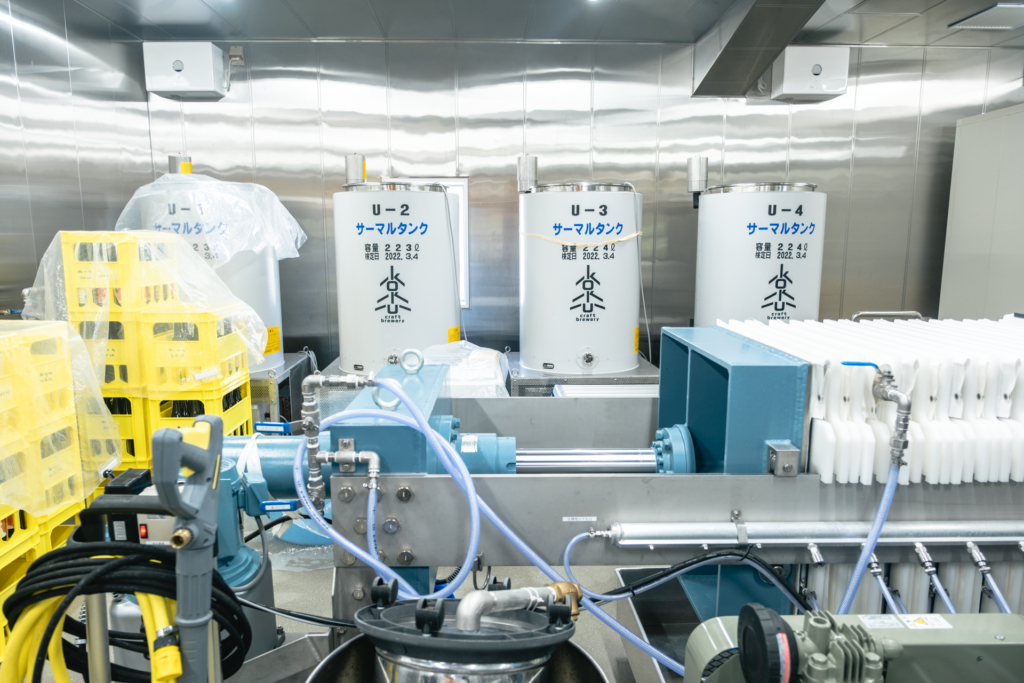
The facility includes a “barley brewery” that makes happoshu (sparkling wine) and a brewery that is considered a “rice brewery” that handles sake. Both are surprisingly small, but Koji Furuya, the head of the brewery, says that they were all created for the sake of the customers. Koji Furuya, the head of the brewery, says, “It is important for people who come here to see and touch the actual process of making sake, and to become interested in it. There are not many places where you can talk with the sake brewers, so we want to propose sake from a variety of perspectives that only we can offer. The new restaurant will return to Sanwa Sake Brewery’s origins in sake, and at the same time, it will be a place where the company can express its gratitude to its customers.
With this in mind, the company plans to offer sake made to order. They are also considering having users actually participate in the sake brewing process by shaking the koji, or even better, by making koji together. This is a bold challenge for a company to take on, even if it is to increase the number of new sake fans. There is no end to the ideas that only a small brewery can come up with. However, this is where their own skills are needed. In order to realize a complete order, Mr. Furuya hopes that people will first come into contact with sake, which has a strong image of being sacred, and become familiar with it, even though every day will be a continuous learning process. He also expressed his gratitude for the fact that the brewery is located in Usa City and for the local spring water and rice, and his hope that the sake brewing process will make the most of the local flavors and appeal to many people.

Challenges as a complex alcoholic beverage manufacturer continue.
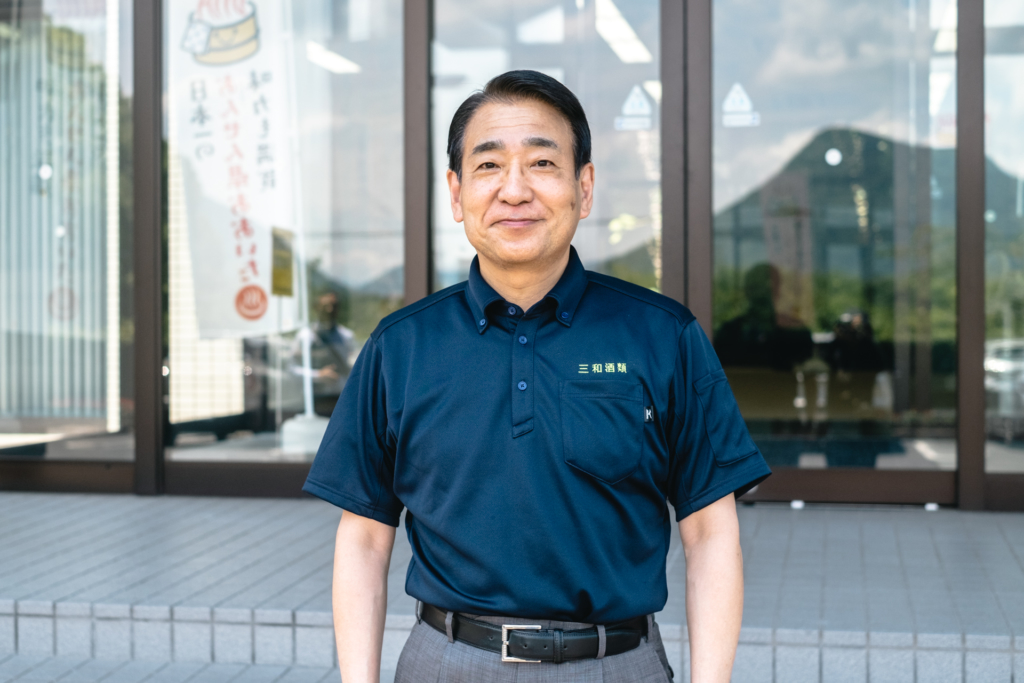
The catchphrase is “Iichiko, it’s a gentle intoxication.
Since 1993, Sanwa Shuzui has been advocating through its advertisements the enjoyment of pleasantly tasting alcoholic beverages and moderate drinking that suits one’s needs. These days, the amount of alcohol consumed is decreasing around the world. Sanwa Shuzo respects the individual’s way of enjoying alcoholic beverages, and would like to offer customers a moderate way to enjoy alcoholic beverages, rather than a quantity. Mr. Shimoda says, “Our mission is to provide our customers with a sense of satisfaction that cannot be compensated for by quantity. The clear, full, delicate flavor of Iichiko is inspired by the brewing of sake, which the company has been making since before it was founded, and is ideal as a conversation-stimulating food sake. Sanwa Shuzu will continue to take on new challenges while respecting the spirit and regional characteristics of each product, its diversity and tastes, and above all, its “people.





